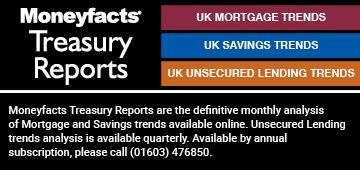Rachel Springall, Finance Expert at Moneyfacts, said:
“Savers looking to invest in a fixed rate bond to guarantee the return on their cash may be delighted to see the average return on a one-year fixed rate bond rose month-on-month, halting seven consecutive months of rate cuts. Challenger banks were notably active in this sector throughout May, repricing existing deals and launching new bonds to entice deposits. The average shelf-life of a fixed bond rose to 48 days, its highest point since February 2023. Fixed rates have been rising due to volatile swap rates and lesser expectations of an imminent cut to the Bank of England base rate. However, it is widely anticipated that interest rates will come down in the future, so savers will need to decide whether now is the time to lock into a longer-term fixed bond instead. Month-on-month, the average longer-term fixed bond rose, but it pays 0.46% less than the average one-year bond.
“Those savers who have not yet utilised this year’s ISA allowance may be disappointed to see rates have fallen across the Cash ISA spectrum month-on-month. The average one-year and longer-term fixed ISA rates have fallen to their lowest points in 12 months, standing at 4.40% and 4.04% respectively, compared to June 2023 when they were 3.96% and 4.01%. Those savers who prefer to have an easy access ISA, due to their flexibility, will find the average rate has dropped to its lowest point since the start of February 2024 (3.30%), which was before the ISA season got into full swing. However, the overall choice of Cash ISAs continued to rise, standing at 553 options this month, the highest count on our records.
“Savers who have a simple easy access account may want to check to see if they are getting a decent return on their pot, as rates have improved due to provider competition. The average easy access rate rose to 3.12%, the first rise since March 2024. The average rate is above 3% but the best deals pay much more, so it is clear there are many easy access accounts out there paying a poor return. Those savers unfamiliar with the brands that sit in the top rate tables should keep in mind that, when protected by the Financial Services Compensation Scheme (FSCS), they would have the same level of protection as a well-known high street bank. Savers would be wise to review and switch their accounts regularly if they want to chase down the best rates.”
Rachel Springall, Finance Expert at Moneyfacts, said:
“Savers looking to invest in a fixed rate bond to guarantee the return on their cash may be delighted to see the average return on a one-year fixed rate bond rose month-on-month, halting seven consecutive months of rate cuts. Challenger banks were notably active in this sector throughout May, repricing existing deals and launching new bonds to entice deposits. The average shelf-life of a fixed bond rose to 48 days, its highest point since February 2023. Fixed rates have been rising due to volatile swap rates and lesser expectations of an imminent cut to the Bank of England base rate. However, it is widely anticipated that interest rates will come down in the future, so savers will need to decide whether now is the time to lock into a longer-term fixed bond instead. Month-on-month, the average longer-term fixed bond rose, but it pays 0.46% less than the average one-year bond.
“Those savers who have not yet utilised this year’s ISA allowance may be disappointed to see rates have fallen across the Cash ISA spectrum month-on-month. The average one-year and longer-term fixed ISA rates have fallen to their lowest points in 12 months, standing at 4.40% and 4.04% respectively, compared to June 2023 when they were 3.96% and 4.01%. Those savers who prefer to have an easy access ISA, due to their flexibility, will find the average rate has dropped to its lowest point since the start of February 2024 (3.30%), which was before the ISA season got into full swing. However, the overall choice of Cash ISAs continued to rise, standing at 553 options this month, the highest count on our records.
“Savers who have a simple easy access account may want to check to see if they are getting a decent return on their pot, as rates have improved due to provider competition. The average easy access rate rose to 3.12%, the first rise since March 2024. The average rate is above 3% but the best deals pay much more, so it is clear there are many easy access accounts out there paying a poor return. Those savers unfamiliar with the brands that sit in the top rate tables should keep in mind that, when protected by the Financial Services Compensation Scheme (FSCS), they would have the same level of protection as a well-known high street bank. Savers would be wise to review and switch their accounts regularly if they want to chase down the best rates.”











